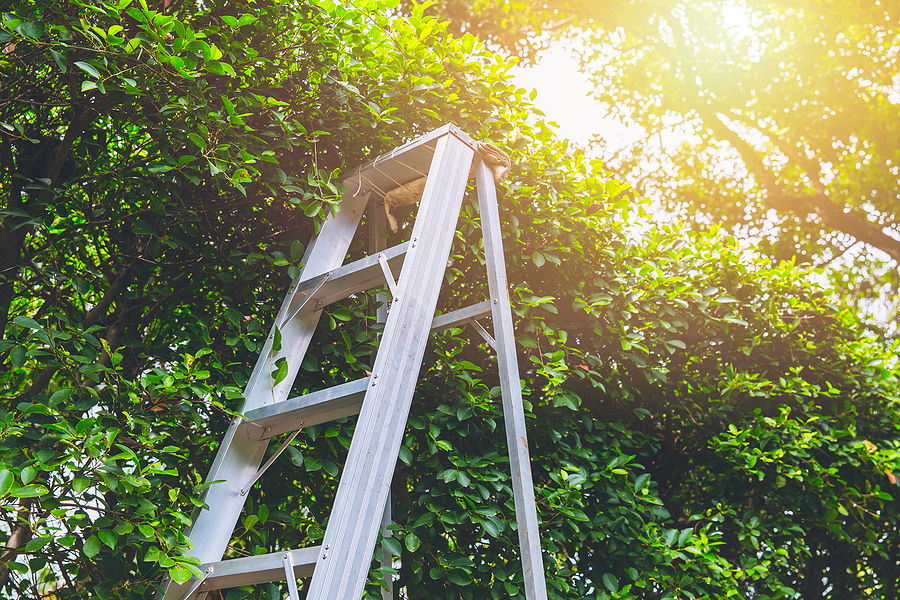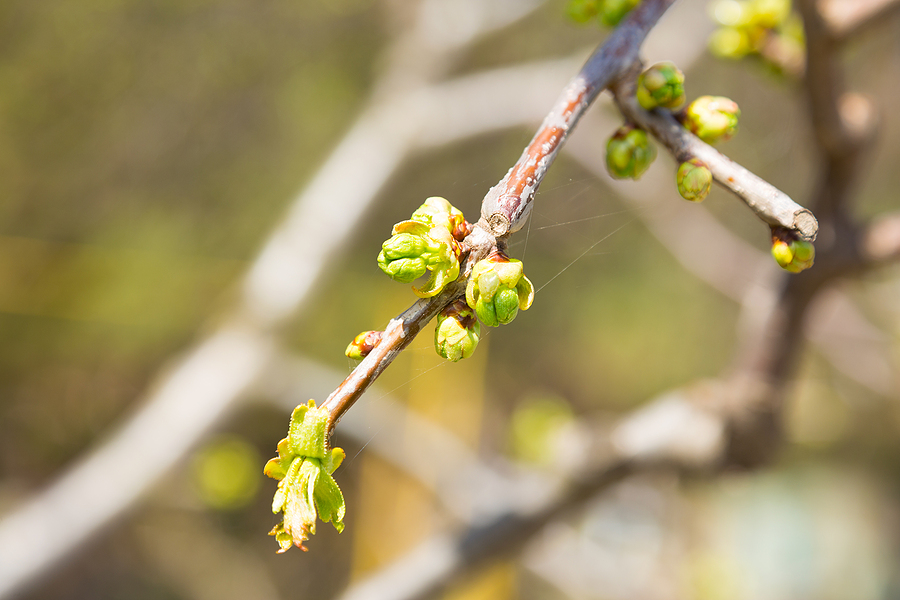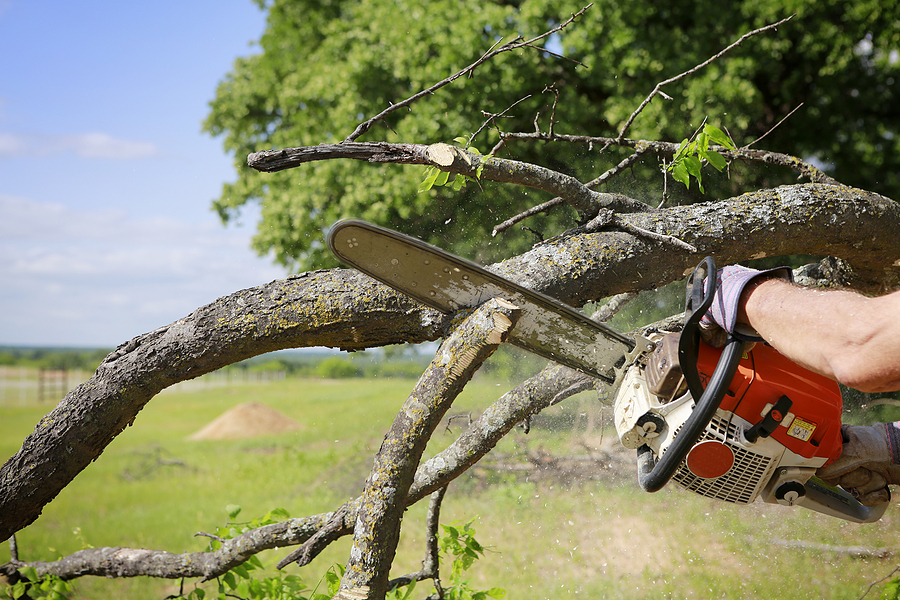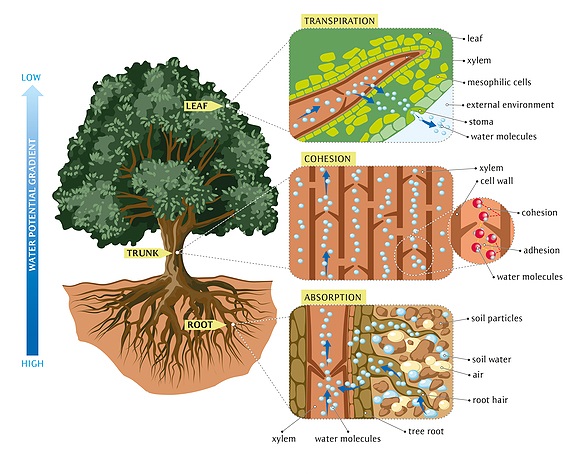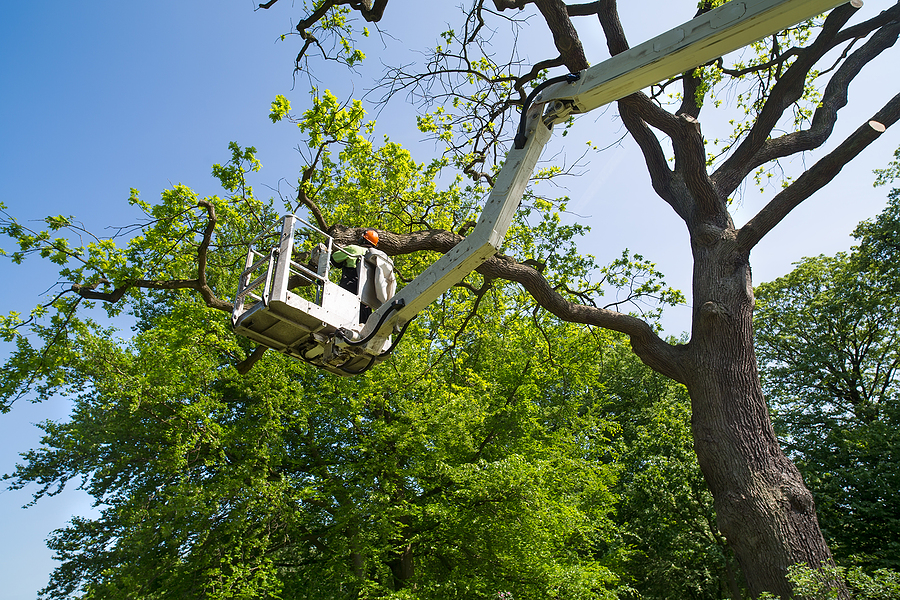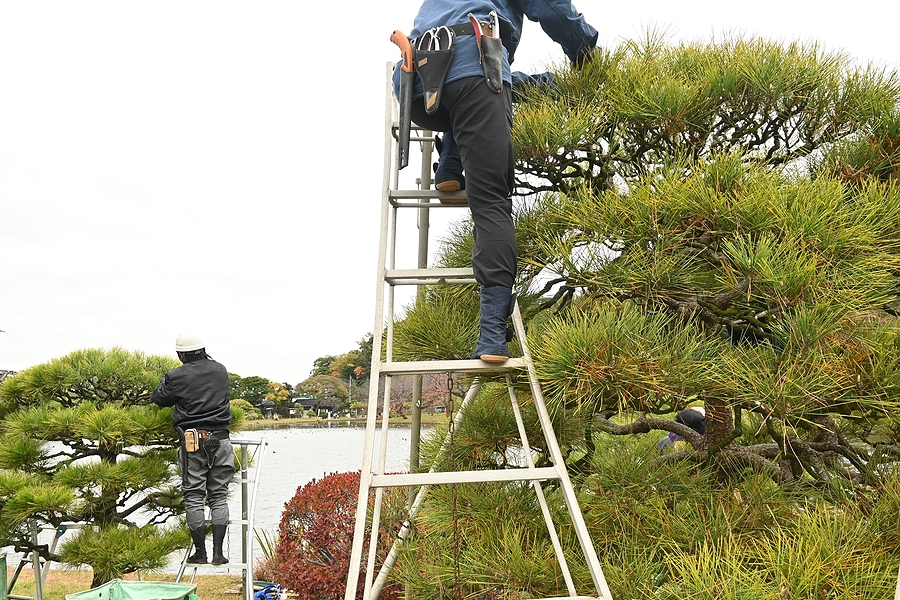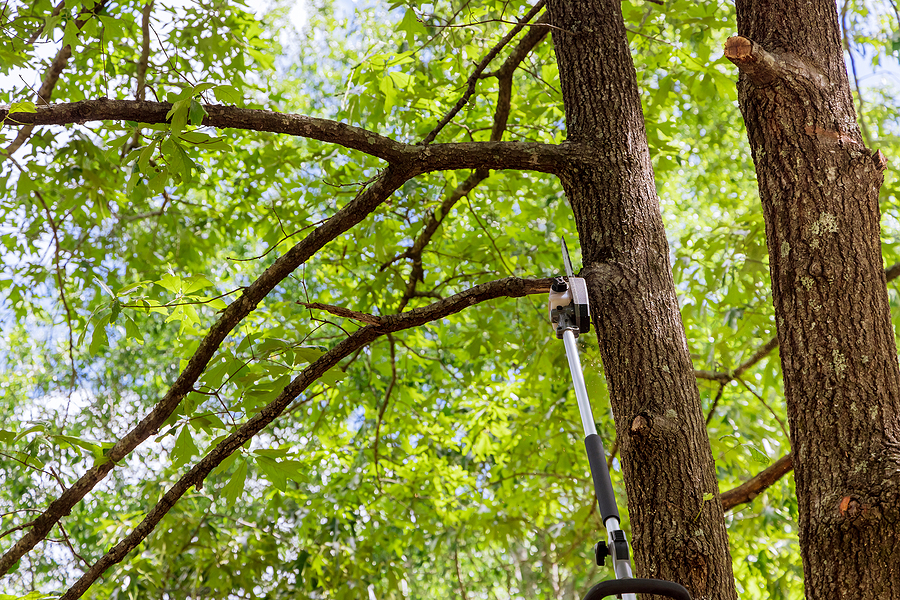A towering oak or a vibrant maple adds beauty and value to any Indiana property. But when their branches die, they become more than just an eyesore; they pose a significant risk. Proper and timely removal of dead tree limbs is a crucial part of responsible tree ownership, ensuring the safety of your property and the long-term health of your trees.
This guide will walk you through everything you need to know about dead branch removal in Indiana. We’ll cover why it’s so important, the best time of year for tree trimming, the tools you’ll need, and how to safely complete the job. We’ll also discuss when it’s time to call in a professional tree service for help.
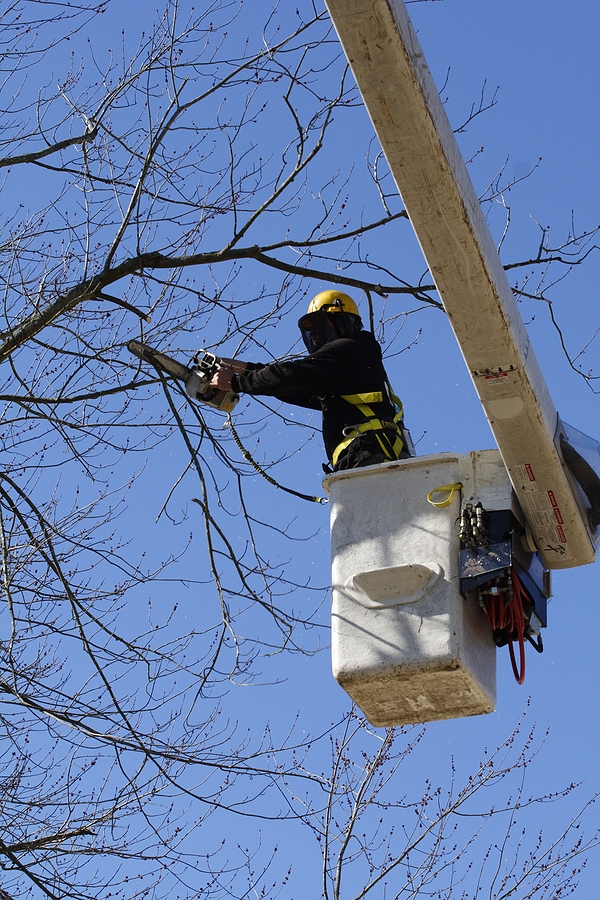
Why You Should Remove Dead Tree Limbs
Leaving dead branches on your trees might seem harmless, but it can lead to serious problems. Understanding these risks is the first step toward maintaining a safe and healthy yard.
Safety Hazards
Dead branches are weak and can break off at any moment, especially during Indiana’s unpredictable storms, high winds, or heavy snow. Falling limbs can cause severe injury to people, damage your home or car, and even take down power lines.
Tree Health
Dead wood is an open invitation for pests and diseases. Insects like bark beetles and carpenter ants, along with wood-decaying fungi, can move from a dead branch into the healthy parts of the tree, causing a larger infestation or infection that could eventually kill the entire tree. Removing dead limbs helps seal off these entry points.
Aesthetic Improvements
A well-pruned tree simply looks better. Removing dead, decaying branches improves the overall appearance of your tree and enhances your property’s curb appeal. Regular tree trimming encourages healthy new growth, resulting in a fuller, more vibrant canopy.
The Best Time for Tree Pruning in Indiana
Timing is everything when it comes to tree pruning. While you can remove dead branches at any time of year, certain seasons offer distinct advantages for the health of your trees.
Winter (Dormant Season)
Late fall to late winter is widely considered the best time for tree trimming in Indiana.
- Visibility: With all the leaves gone, the tree’s structure is fully visible, making it easy to identify dead, damaged, or crossing branches.
- Less Stress: Pruning during dormancy is less stressful for the tree, as it’s not actively growing. The cuts will have time to begin healing before the vigorous growth of spring.
- Reduced Disease Risk: Many tree diseases, like the fungal pathogens that cause oak wilt, are inactive in cold weather. Pruning now minimizes the risk of spreading infection.
Spring
Light pruning can be done in the spring, but heavy tree trimming should be avoided.
- Flowering Trees: For trees that bloom in spring, like dogwoods and redbuds, wait until after they have finished flowering to prune. Pruning too early can remove the flower buds.
- Growth Spurt: Trees are putting a lot of energy into new growth, and extensive pruning can be stressful.
Summer
Summer is generally not the ideal time for major pruning, but it’s a good time for specific tasks.
- Identifying Dead Wood: It’s easiest to spot dead limbs in the summer because they won’t have any leaves, unlike the surrounding healthy branches.
- Storm Damage: Summer storms can cause significant damage. It’s important to remove any broken or hazardous limbs immediately for safety.
Fall
Early fall is acceptable for minor trimming, but late-fall pruning should be done with caution.
- Fungal Growth: Fungi release spores in the fall, and fresh pruning cuts can be susceptible to infection.
- Delayed Healing: Cuts made late in the season may not have time to heal before winter, leaving the tree vulnerable to cold damage.
For most native Indiana trees like oaks, maples, and hickories, the dormant season is the optimal window for dead branch removal.
Request a Free Estimate for Tree Trimming and Pruning ✨
Tools and Equipment for Dead Branch Removal
Using the right tool for the job makes the work safer and more effective. Here’s what you’ll need for basic dead tree limb removal.
- Hand Pruners (Secateurs): Best for small branches up to ¾-inch in diameter.
- Loppers: These have long handles that provide extra leverage for cutting branches up to 2 inches thick.
- Pruning Saw: A hand saw is necessary for branches between 2 and 5 inches in diameter.
- Pole Saw: This tool allows you to reach higher branches from the ground, but can be difficult to control.
- Safety Gear: This is non-negotiable. Always wear safety glasses, sturdy gloves, and a hard hat. For any work above your head, a hard hat is essential to protect you from falling debris.
Step-by-Step Guide to Removing Dead Limbs
Safety must be your top priority. Before you begin, assess the situation. If the branch is large, high up, or near power lines, stop and call a professional. For smaller, accessible limbs, follow these steps.
- Clear the Area: Move any vehicles, furniture, or other obstacles from the work zone. Ensure pets and people are safely indoors.
- Make the Undercut: About 6-12 inches from the tree trunk, make a cut on the underside of the branch, going about a third of the way through. This prevents the bark from tearing down the trunk when the branch falls.
- Make the Relief Cut: A few inches past the undercut (further from the trunk), cut all the way through the branch from the top. The majority of the branch will now fall safely away.
- Make the Final Cut: You are now left with a short stub. Cut this stub off just outside the “branch collar”—the swollen area where the branch meets the trunk. Do not cut flush with the trunk, as this collar contains specialized cells that help the wound heal properly.
When to Hire a Professional Tree Service
While DIY pruning is possible for small jobs, many situations require an expert. Tree care is a dangerous job that often demands specialized skills and equipment. It’s time to call for professional tree service when:
- The dead limbs are more than 5 inches in diameter.
- The branches are high up in the tree and cannot be reached safely from the ground.
- The tree is located near power lines or structures.
- You are not confident in your ability to perform the work safely.
- The tree shows signs of significant decay or disease.
Hiring a certified contractor from a reputable tree care company provides numerous benefits. They have the expertise, proper equipment, and crucial insurance coverage to protect you and your property. Professionals ensure the job is done safely and correctly, promoting the long-term health of your trees.
Frequently Asked Questions
How do I identify a dead limb versus a dormant one?
A simple way to check is the “scratch test.” Gently scratch a small spot on the bark. A living branch will be green and moist underneath, while a dead branch will be brown and dry. In summer, a dead limb will have no leaves while the rest of the tree does.
When is the worst time of year to remove dead limbs in Indiana?
While dead limbs can be removed anytime, the least ideal time for major pruning on living tissue is during spring’s peak growth or late fall when fungal activity is high and healing is slow. However, for strictly dead wood, removal is always a good idea for safety.
How close to the tree trunk should I cut a dead limb?
You should cut just outside the branch collar, which is the slightly swollen area where the branch connects to the trunk. Avoid cutting flush against the trunk, as this can damage the tree and hinder its ability to heal.
What do I do with the removed limbs after cutting them?
Many municipalities in Indiana have specific guidelines for yard waste disposal. You can often bundle smaller branches for curbside pickup, take them to a local compost facility, or rent a wood chipper for larger jobs. Professional tree services will handle all debris removal.
How do I find a reputable and insured tree care service in Indiana?
Look for companies with certified arborists on staff, ask for proof of liability insurance and worker’s compensation, and check for reviews on trusted sites. Getting multiple quotes is also a good practice.
Maintain Healthy, Beautiful Trees
Regularly removing dead tree limbs is a fundamental part of tree care in Indiana. It protects your family and property from harm, prevents the spread of disease, and keeps your landscape looking its best. By understanding when and how to perform dead branch removal, you can confidently maintain the smaller trees on your property. For the big jobs, however, don’t hesitate to rely on the safety and expertise of a professional tree service.
Ready to ensure your trees are safe and healthy? Schedule a professional tree trimming consultation with our certified arborists today.
Related Post: Beyond Aesthetics: The Importance of Removing Dead Branches for Tree Health

